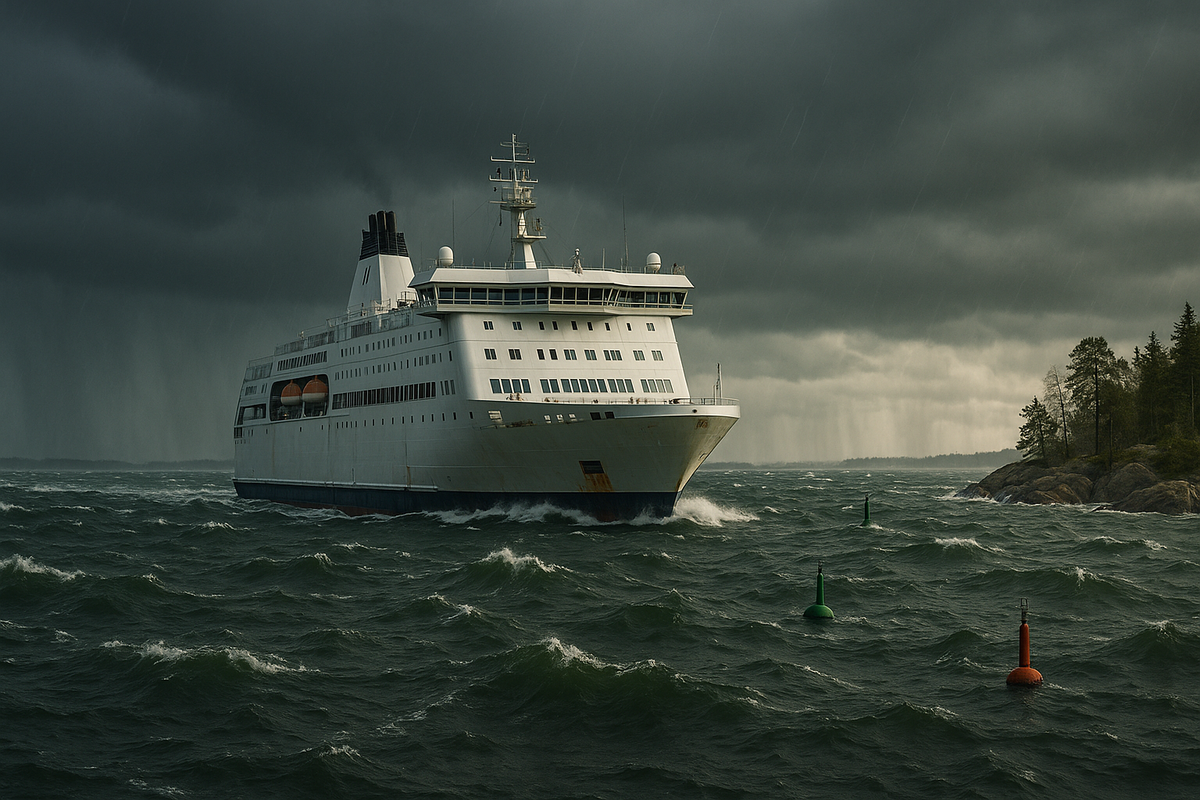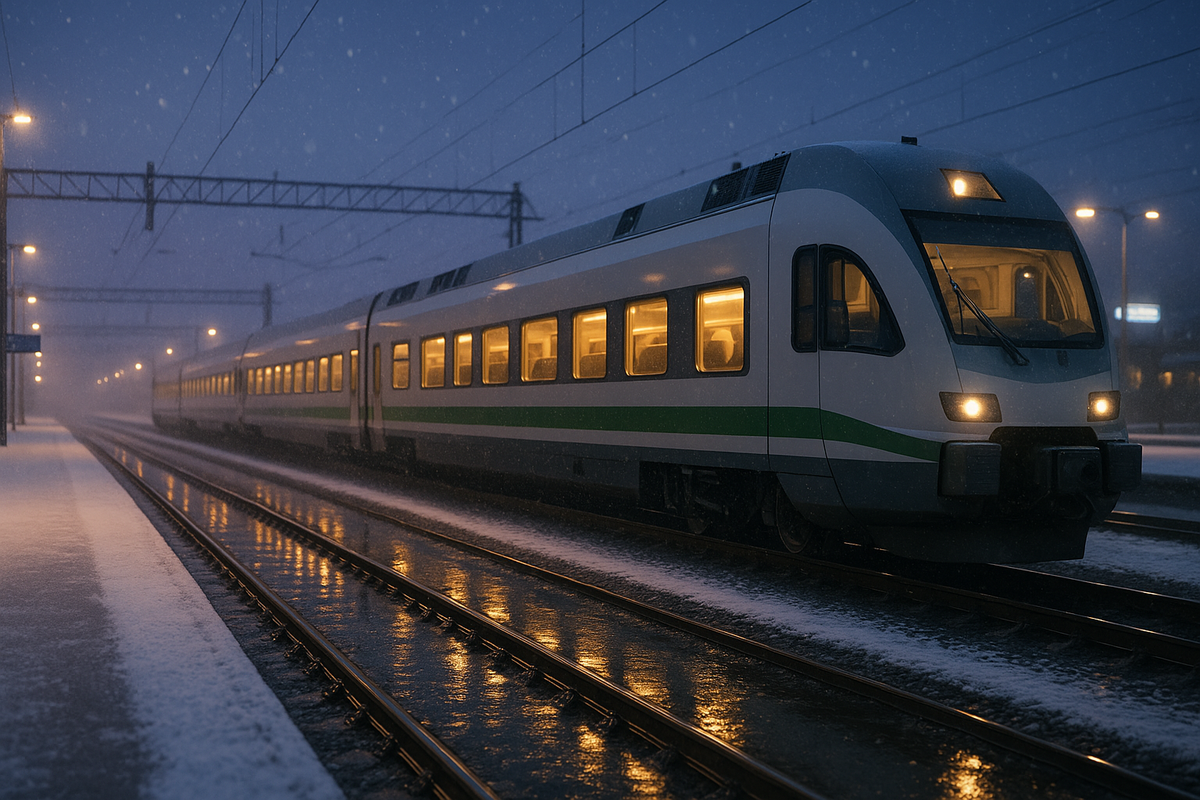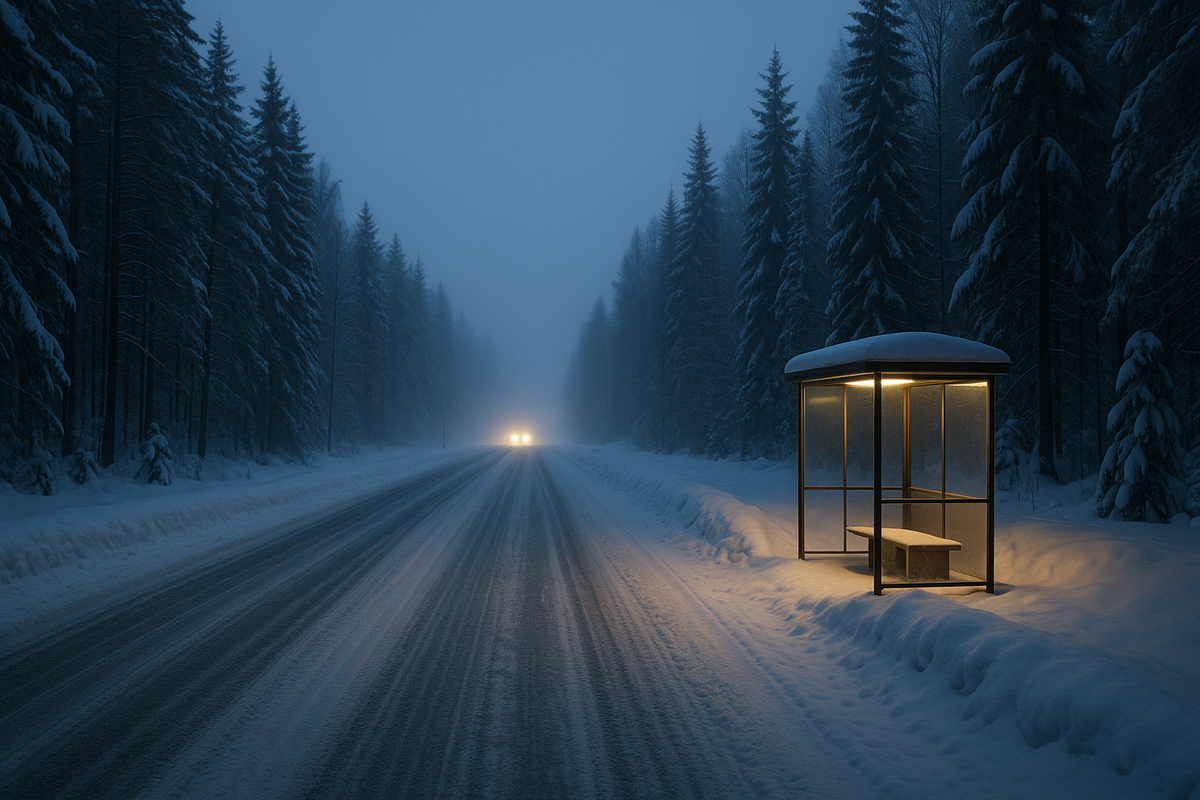🚌 Weather and transport in Finland: how to get around easily all year round
You already have a rough idea of the weather and seasons in Finland: where it's warmer, where it's windier, when the snow is stable. The next logical question is: "How does all this affect ferry and train schedules and my transfers?"
To be fair, Finnish transport is actually pretty reliable, but it's not perfect. Storms in the Baltic Sea, snowfalls, black ice, fog in Lapland — these things don't have to put a damper on your trip if you allow for extra time, a flexible fare and a plan B in advance. In this article, we'll break it down: how the weather affects different types of transport, where to build in buffers, when it's better to switch from car to train, and why in winter, "during the day" isn't just a nice tip from Instagram.
Three rules for a smooth journey
Before we delve into storms and snow, let's establish three simple ideas:
- Type of transport by season.
In winter, it makes more sense to take trains rather than cars for some routes; in summer, storms at sea can interfere with late ferries. - Having extra time is more important than a perfect connection.
It's nice when the ferry arrives at 12:00 and the train at 12:10. It's peaceful when there's an hour and a half between them, rather than worrying about whether you'll make it. - Flexible fares on "key" sections.
If you have to overpay for an exchange without penalty, do so where the weather risk is highest: winter roads, sea sections, final domestic flights.
Next, by type of transport: sea, rail, road and air.

Sea and ferries: when the wind is the main director
Storms in the Baltic Sea are not an everyday occurrence, but they are the ones that most often interfere with plans. Especially if you read articles about the Baltic Sea by season and dream of island routes, and the wind suddenly decides to play solo.
A couple of practical conclusions:
● Don't schedule the last ferry of the day to connect with a flight or train.
● On routes through archipelagos (Turku, Åland, Helsinki–Tallinn), always be prepared for a "plus or minus an hour" delay in bad weather.
● If you see strong winds and warnings in the forecast, it's easier to change your plans than to stand in the port and argue with the Baltic Sea.

Trains: a reliable "axis", but not a teleport
Trains in Finland are usually an excellent option, especially in winter: snow is not a force majeure for them, but rather a backdrop. But even here, delays do occur: heavy snowfall, technical work, rare malfunctions.
Rail planning tips (weather-aware)
- Prefer direct trains for key long distances if possible
- Avoid last evening trains for critical same-day arrivals
- Keep at least 45–60 minutes buffer before flights or ferries
- In heavy snow, treat 10–20 min delays as “normal”
If you see in the winter forecast (especially in articles about winter in Finland and Lapland) that snowstorms are expected, it is better not to plan your route "by the book" — leave yourself some breathing room.
Buses and domestic flights: where flexible fares help
Buses are most often affected by the same weather conditions as cars: snow, ice, fog, slow traffic. Domestic flights, on the other hand, can be delayed in heavy snow or fog.
Two principles apply here:
● If the bus/flight is a link in a long chain, it's good to have a fare that can be changed or refunded without any fuss.
● Don't put too many "if everything goes perfectly" scenarios in one day: ferry → bus → flight → another bus. In real life, "perfect" happens, but less often than in plans on paper.

Roads and driving: winter and black ice
Finnish roads are well maintained, but the laws of physics still apply. Wind, snow, freezing temperatures, bridges and open areas — all of these contribute to black ice and reduced speed.
Winter driving reality check
- Plan long drives in daylight hours, especially in Lapland
- Reduce your planned average speed vs. summer assumptions
- Always allow extra time for fuel, breaks and unexpected slow sections
- If freezing rain or blizzard is forecast, consider train instead of car
If you are planning to visit Lapland in different seasons, remember: in winter it is darker and colder there than in the south, and reindeer and moose do not read the traffic rules. A daytime journey with plenty of daylight and time to spare is much more pleasant than a night-time race to beat the snowstorm.
Buffers and connections: how much time do you really need?
We would like to have a strict formula here, but life makes adjustments. Let's not make it a dogma, but a starting point.
The easiest thing to remember is that Finnish transport likes to have a buffer. If your connection is critical (last flight, important event, expensive ticket), don't save 40 minutes on your schedule — it will turn into a couple of hours of stress later on.
How to plan your route taking the weather into account
Putting it all together, you get the following checklist:
● First, consider the season and region: summer in Finland, winter, Lapland, the sea or lakes.
● Then choose the route axis: where is it better to take a train, where can you take a car, where is the sea an option rather than the only way.
● For areas with weather risks (storms, Lapland, winter roads), check the FMI forecasts and warnings and choose more flexible tickets.
● Don't build your route like dominoes: one fall and everything collapses. Let there be "islands of safety" with a buffer where you can breathe.
There's no such thing as a perfect trip, is there? Sometimes the ferry's delayed because of the wind, sometimes the bus drives slower in the snow, and sometimes the train arrives 20 minutes late, and the display board honestly says it's because of the weather.
But this is where a well-planned route really comes in handy: when you have extra time, a backup plan and you know how transport works in different seasons, weather surprises turn into "interesting travel stories" rather than disasters.
Let us know in the comments what kind of weather adventures you've had on the road. Storms and ferries, snow and trains, black ice and cars? What did you find worked well, and what would you definitely not repeat? Your stories will help other readers plan their trips around Finland more calmly — from Helsinki to Lapland.
FAQ
Strong winds and high waves can slow down traffic or cause delays, sometimes even cancellations of individual trips, especially for small vessels and local crossings. When the sea is calm, ferries usually run on schedule, but it's still better to allow extra time for connections with trains and flights.
Usually, the carrier offers a transfer to the next available flight or a refund. It is important not to link the cancelled ferry to a flight: then the transfer will simply be a time shift, rather than a chain of cancelled tickets. Keep an eye on SMS messages and the company's apps, and check options B and C on land.
They can, but more often than not it's 10-20 minutes rather than hours. Heavy snowfall, technical work and rare disruptions do happen, but compared to many countries, the Finnish railways are very reliable. For important connections, add another 45-60 minutes to the usual "airport" time.
The roads are cleared and gritted, and cars have winter tyres, but black ice, snowfall and darkness are still a factor. If you have little experience of winter driving, it is better to keep your journeys short, drive during the day, don't rush to keep to your schedule and, if possible, use trains for long journeys.
In winter, there is little daylight in northern regions: dawn comes later and dusk comes earlier. During the day, it is easier to see ice, snowdrifts, animals on the roadside and react to unexpected situations. At night and during snowfall, even locals slow down — and this is normal behaviour, not "inability to drive".
In addition to the standard 1.5–2 hours to the airport, add another 45–60 minutes, especially in winter and on days with snowfall. It's better to relax and drink coffee in the terminal than to run along the platform and watch the boarding gate close.
Yes, but usually in the form of minor delays: slower traffic, more careful driving, more time at stops. In heavy rain and icy conditions, allow 15-30 minutes extra to your usual travel time.
Not "often", but in heavy fog, snowfall or icy runways, delays and postponements are possible. If the flight is critical (connection with an international flight, important event), it is more logical to take it with a few days' leeway or with a fare that allows for changes without penalty.
It makes sense to make the "key" sections flexible: sea crossings, winter flights to/from Lapland, the last leg before an expensive international flight. For short and non-critical sections, standard fares are sufficient.





0 comments
Log in to leave a comment